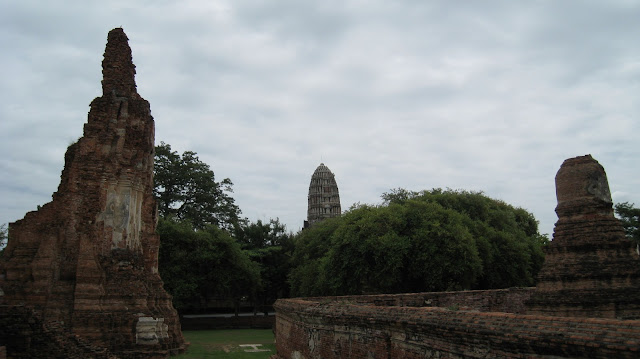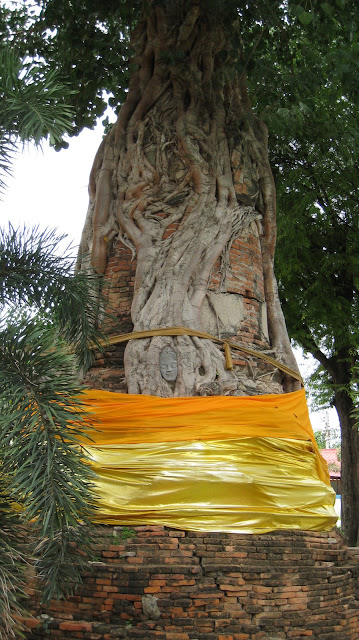Ayutthaya was a Siamese kingdom that existed from 1350 to 1767. Ayutthaya was friendly towards foreign traders, including the Chinese, Vietnamese (Annamese), Indians, Japanese and Persians, and later the Portuguese, Spanish, Dutch and French, permitting them to set up villages outside the walls of the capital, also called Ayutthaya. In the sixteenth century, it was described by foreign traders as one of the biggest and wealthiest cities in the East. The court of King Narai (1656–88) had strong links with that of King Louis IV of France, whose ambassadors compared the city in size and wealth to Paris.
By 1550, the kingdom's vassals included some city-states in the Malay Peninsula (Malaysia), Lan Xiang (Laos), Sukhothai, Chiang Mai (Lanna), Cambodia and the Shan States.
According to foreign accounts, Ayutthaya was officially known as Siam, but many sources also say that the people of Ayutthaya called themselves Tai, and their kingdom Krung Tai or 'the Kingdom of the Tais'.
By the end of the 16th century, Ayutthaya was regarded as the strongest power in mainland Southeast Asia. However, the kingdom of Ayutthaya was not a unified state but rather a patchwork of self-governing principalities and tributary provinces owing allegiance to the king of Ayutthaya under The Circle of Power, or the Mandala System, as some scholars suggested. These principalities might be ruled by members of the royal family of Ayutthaya, or by local rulers who had their own independent armies, having a duty to assist the capital when war or invasion occurred.
In 1511, immediately after having conquered Mallaca, the Portuguese sent a diplomatic mission headed by Duarte Fernandes to the court of King Ramathibodi II of Ayutthaya. Having established amicable relations between the kingdom of Portugal and the Kingdom of Siam, they returned with a Siamese envoy with gifts and letters to the King of Portugal. They were probably the first Europeans to visit the country. Five years after that initial contact, Ayutthaya and Portugal concluded a treaty granting the Portuguese permission to trade in the kingdom. A similar treaty in 1592 gave the Dutch a privileged position in the rice trade.
Foreigners were cordially welcomed at the court of Narai (1657–1688), a ruler with a cosmopolitan outlook who was nonetheless wary of outside influence. Important commercial ties were forged with Japan. Dutch and English trading companies were allowed to establish factories, and Thai diplomatic missions were sent to Paris and The Hague. By maintaining all these ties, the Thai court skillfully played off the Dutch against the English and the French, avoiding the excessive influence of a single power.
In 1765, a combined 40,000-strong force of Burmese armies invaded the territories of Ayutthaya from the north and west Major outlying towns quickly capitulated. The only notable example of successful resistance to these forces was found at the village of Bang Rajan. After a 14 months' siege, the city of Ayutthaya capitulated and was burned in April 1767. Ayutthaya's art treasures, the libraries containing its literature, and the archives housing its historic records were almost totally destroyed, and the Burmese brought the Ayutthaya Kingdom to ruin.
All that remains of the old city are some impressive ruins of the royal palace. General Taak-Sin, the governor of Taak, who fled the capital, gathering forces, began striking back at the Burmese. He finally established a capital at Thonburi, across the Chao Phraya from the present capital of Bangkok. Taak-Sin ascended the throne, becoming known as King Taak-Sin or Taksin.
The ruins of the historic city of Ayutthaya and "associated historic towns" in the Ayutthaya historical park have been listed by the UNESCO as a World Heritage Site. The modern city of Ayutthaya was founded near the old city, and is now capital of the Ayutthaya province in the Kingdom of Thailand.





































No comments:
Post a Comment